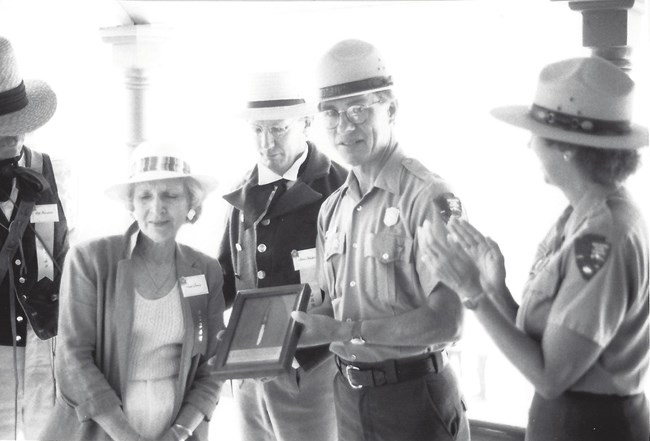Bringing to Life the "Largest and Best"

NPS photo That flame reached as far as Washington, D.C., where the Secretary of the Interior in 1961 designated Fort Union as North Dakota’s first National Historic Landmark (NHL) While not yet a national park, Connolly, then-secretary of North Dakota’s Yellowstone-Missouri Confluence Commission, told Senator Milton R. Young that “we still are hopeful of having archaeological work done at the Fort Union site and feel its designation as a Landmark is an important step toward that goal.” Why archaeology? Because, as the 1961 NHL form described, “other than a few cellar pits, there is little surface evidence of the fort.” Archaeological investigations would provide the information necessary for an accurate fort restoration, which is what regional boosters wanted to attract tourists. “Fort Union archeological research is most desirable to hasten recognition of Fort Union’s role in the Nation’s history and development,” the Yellowstone-Missouri-Fort Union Commission resolved at a March 24, 1962 meeting; “and most necessary to prevent the loss of irreplaceable historic objects.” The adopted resolution continued: “BE IT FURTHER RESOLVED that through duly elected Senators and Representatives, the Commission”—of which Connolly was secretary—“respectfully petition the Congress of the United States to allocate funds for such archeological work.” 
NPS photo Years Earlier, the Military Saved Fort UnionFort Union was no military post, not like the fort of the same name in northern New Mexico. Nonetheless, the U.S. military in the 1800s unintentionally preserved the ruins of this American Fur Company post it initially destroyed. Yes, destroyed. In 1867, the military acquired and razed Fort Union to salvage construction materials for building Fort Buford, the first and only permanent military command headquartered where in 1805 a passing Meriwether Lewis had thought it a “most eligible site for an establishment.”Located three miles east of Fort Union, at the present-day confluence of the Missouri and Yellowstone Rivers, Fort Buford operated from 1866 to 1895. During those years, the military reservation encompassed the confluence area in its entirety. And because no civilians could establish settlements within the reservation’s boundaries, not even adjacent to the Great Northern Railway’s track passing through military installation, the remains of old Fort Union survived into the Twentieth Century. It was then, when its ruins were threatened by gravel mining in the 1930s, that the State Historical Society of North Dakota first preserved the fort site as a state park. People hoping to capitalize on the fort’s tourism potential had to wait another three decades before their desire for a reconstruction seemed even remotely possible to realize. |
Last updated: April 24, 2021
